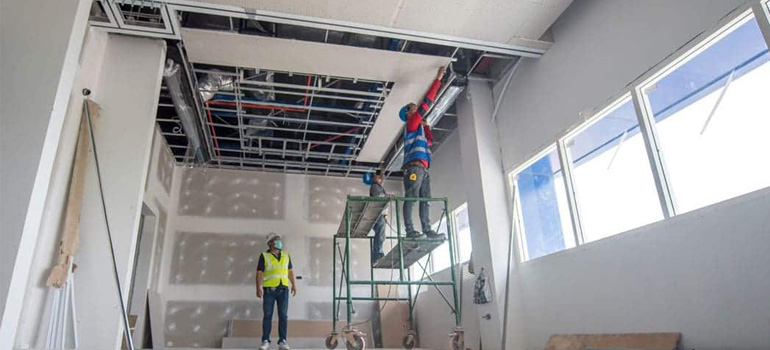In the world of commercial property management—whether it’s an office block, warehouse, or retail space—how you handle maintenance can make or break your bottom line. Two strategies dominate: planned maintenance and reactive maintenance. Understanding their differences is key to keeping your premises running smoothly and your costs in check. Here’s the rundown.
What Is Planned Maintenance?
Planned maintenance, often dubbed preventative maintenance, is a proactive approach. It involves scheduling regular inspections and upkeep to stop issues before they disrupt operations. For a commercial setting, this might mean servicing HVAC systems quarterly, checking fire alarms monthly, or inspecting lifts to ensure compliance with safety regs.
The Chartered Institute of Building (CIOB) reports that planned maintenance can slash long-term costs by up to 20% by preventing major failures. It’s about keeping downtime low and ensuring your building meets legal standards, like those set by the Health and Safety Executive (HSE).
What Is Reactive Maintenance?
Reactive maintenance is the “fix it when it fails” tactic. A chiller unit breaks down in your factory, or a shopfront shutter jams—you call in the repair team after the problem hits. It’s a response to breakdowns rather than a plan to avoid them.
While it avoids upfront costs, the British Standards Institution (BSI) warns that reactive maintenance can inflate expenses by 30-40% over time. Emergency repairs often come with premium call-out fees, and unplanned downtime can halt production or turn customers away.
Key Differences
- Timing: Planned maintenance is routine and scheduled; reactive waits for something to go pear-shaped.
- Cost: Planned keeps expenses predictable and lower long-term; reactive risks costly surprises.
- Downtime: Planned minimises disruptions; reactive can grind operations to a halt.
- Compliance: Planned helps meet regulatory demands; reactive might leave you exposed.
Which Should You Choose?
For commercial properties, planned maintenance is often the gold standard. Regular servicing of critical systems—think heating, cooling, or electricals—keeps tenants happy and avoids legal headaches. A 2023 survey by the British Property Federation found that 68% of commercial landlords use planned schedules to protect asset value and avoid tenant disputes.
Reactive maintenance might suit minor, non-critical issues—like a flickering light in a low-traffic area. But for big-ticket items like a building’s lift or plumbing, waiting for failure could mean lost revenue and hefty repair bills. The trick is knowing what’s worth planning for.
Real-Life Examples
- Planned: A Manchester warehouse manager schedules quarterly conveyor belt checks, catching a worn part early and avoiding a £5,000 replacement (source: HSE case studies).
- Reactive: A London retail unit ignores a buzzing air-con unit, leading to a £2,000 emergency fix and two days of closure (source: Facilities Management Journal).
Suggestions
- Prioritise planned maintenance for high-impact systems (lifts, HVAC, fire safety) to keep operations humming.
- Use a hybrid approach: plan for essentials but react to low-priority fixes (e.g., a chipped office door).
- Invest in maintenance software like Fiix or UpKeep to track schedules and budgets efficiently.
Summary
- Planned Maintenance: Proactive, scheduled, saves up to 20% long-term; ideal for critical commercial systems.
- Reactive Maintenance: Responsive, no upfront cost, but 30-40% costlier overall; better for minor issues.
- Differences: Timing, cost, downtime, and compliance set them apart.
- Choice: Planned wins for commercial reliability; reactive works for small fixes.
- Examples: Planned prevents costly breakdowns; reactive scrambles to recover.
For commercial properties, maintenance isn’t just about fixing things—it’s about protecting your investment and keeping the wheels turning. Planned or reactive, choose wisely to suit your business needs.




